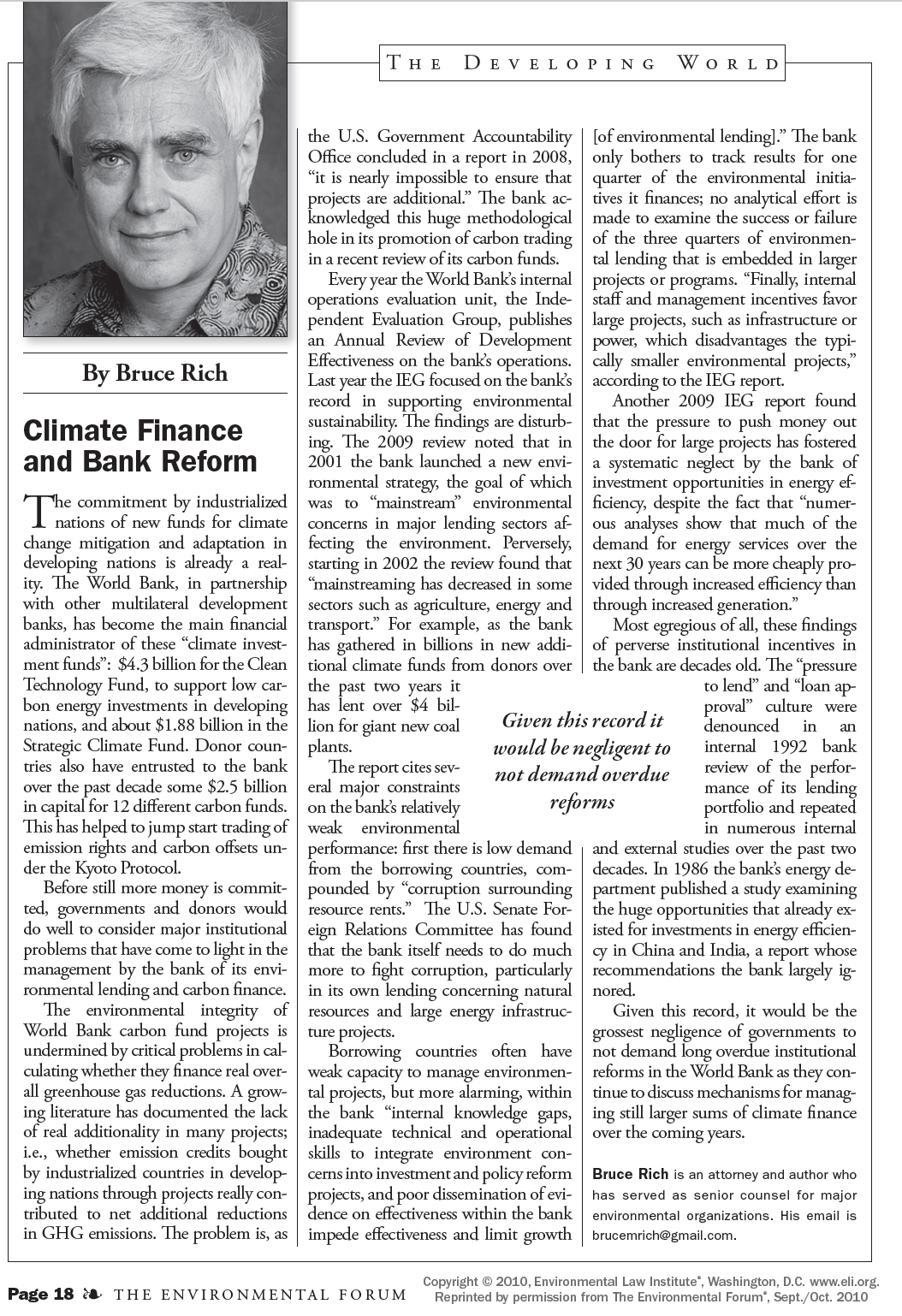- Bruce Rich
- Environmental Forum
- September-October 2010
- p. 18
The World Bank, in partnership with other multilateral development banks, has become the main financial administrator of “climate investment funds...." A growing literature has documented the lack of real additionality in many projects; i.e., whether emission credits bought by industrialized countries in developing nations through projects really contributed to net additional reductions in GHG (greenhouse gas) emissions...T.he U.S. Government Accountability Office concluded “it is nearly impossible to ensure that projects are additional.” The bank acknowledged this huge methodological hole in its promotion of carbon trading in a recent review of its carbon funds....Another 2009 internal Bank report found that the pressure to push money out the door for large projects has fostered a systematic neglect of investment opportunities in energy efficiency, despite the fact that “numerous analyses show that much of the demand for energy services over the next 30 years can be more cheaply provided through increased efficiency than through increased generation.” These findings are decades old. The “pressure to lend” and “loan approval” culture were denounced in an internal 1992 review and in numerous internal and external studies over the past two decades. In 1986 the bank’s energy department published a study examining the huge opportunities that already existed for investments in energy efficiency in China and India, a report whose recommendations the Bank largely ignored.



